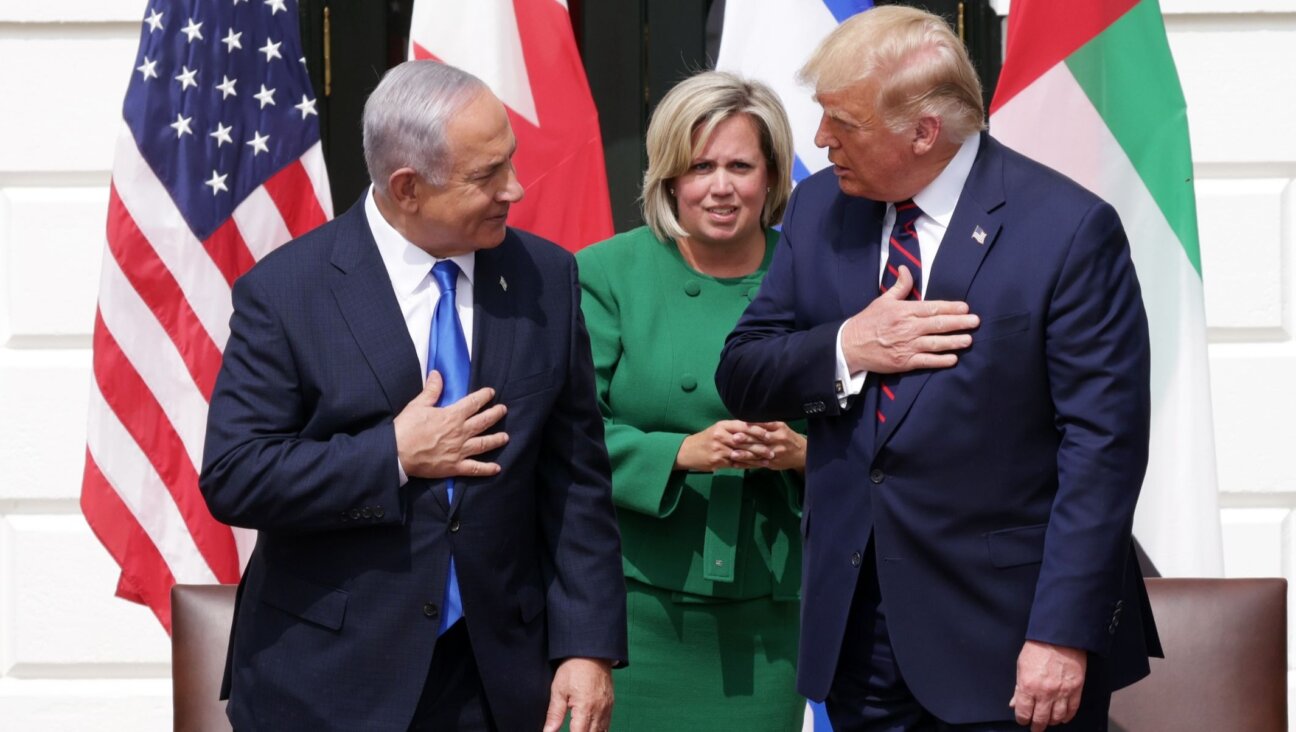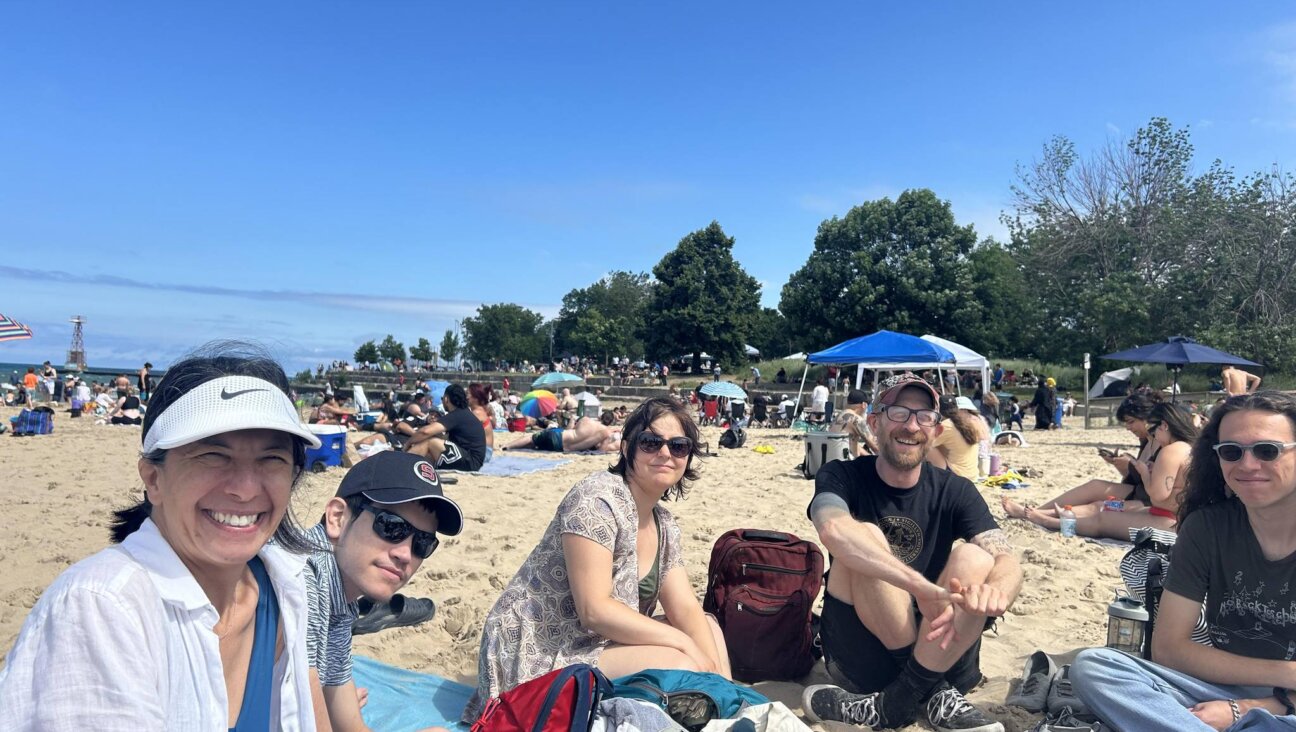The Art of Recovery

The hauntingly beautiful, large-scale black-and-white works that made up Norwegian artist Anne-Karin Furunes’s recent American solo debut are instantly arresting. Viewers are confronted by faces of anonymous women, closely cropped but reproduced to measure more than 5 feet by 7 feet, each with a penetrating gaze of melancholy and defiance, bewilderment and resignation. Approaching more closely, the images dissolve into thousands of tiny holes. But according to dealer Barry Friedman, who inaugurated the fall season of his new gallery in Manhattan’s Chelsea with Furunes’s “Portraits of Unknowns,” even after the artist’s method is explained, some observers still have difficulty grasping that these “paintings” are constructed by making myriad punctures of different sizes in black acrylic canvases and placing them against the white backdrop of the gallery walls.

The verisimilitude is so striking, and subtleties of emotion and light are conveyed so masterfully, that, indeed, as you walk away and the picture comes back into focus, the fact that you are simply looking at holes in a black canvas seems astounding. No clues are given as to the identities of these captivating subjects — each work simply titled “Portraits of Pictures,” with a number — and yet you sense they come from a different time and place. In fact, the works are based on photographs from a Swedish archive that scientifically categorized citizens by ethnicity and other social criteria, flagging deviants for sterilization. Collected in books with such headings as Jews, gypsies, Lapps and criminals — but representing all aspects of society — this monumental project was undertaken by the Rasbiologiska Institut in the 1920s, the first nationally funded study of its kind. It was a model for other European countries, including Germany, though it remained classified until the 1970s, when documentation was found in bins headed for the trash.
The artist has long been concerned with historical recovery. In earlier series, Furunes, 46, has constructed images based on pictures of women who fought in the Finnish Civil War of 1918; Norwegian Jews deported by the Nazis; tuberculosis patients in the children’s hospital that was converted into the home where she currently lives, and teenage soldiers sent to Norway by Germany as they were losing World War II. Even in landscapes, such as depictions of the sky based on weather reports from a wartime atlas, the images seem to reflect national moods and aspirations. Most of these were found in libraries in and around Trondheim, where Furunes is based and where she teaches at the Trondheim Art Academy. She initially worried that perhaps she was once again stripping her subjects of their humanity by reproducing coerced images, but ultimately felt, and maintains, that her work achieved precisely the opposite effect — to “bring them back simply as portraits,” without identifying details, to be encountered at face value.
Although Furunes isn’t Jewish, her grandfather was sent to a concentration camp for defying the Germans, and she views the “disappearance” of Norway’s Jews as a challenge to the country’s national memory of the Holocaust. “History is more complicated than the picture we usually want to see,” she said in an interview with the Forward, noting that while her generation was raised on the notion that Norway, which was occupied during the war, fought “on the right side,” through her research, she learned that many Norwegians, especially members of the police, collaborated with the Nazis. Contemplating the “terrifying” implications of Scandinavians’ own racial policies, she notes that her husband’s grandmother suffered from epilepsy, a condition that warranted sterilization. “He and my children wouldn’t have been born,” she said, adding that, into the 1970s, Norway’s government maintained a policy of clandestinely sterilizing Roma.
All this helps to explain her work’s emotional resonance. “I always wanted to make pictures that simulated a glimpse or faint memory,” Furunes said, noting a particular interest in “found material carrying incomplete histories.” Through carefully mapped and intricately hand-punctured absences of space, she reconstructs images that were concealed and nearly obliterated. At the same time, Furunes questions notions of reality, presenting these portraits for re-examination in a new context as images that change according to the viewer’s perspective.
It’s a slow and painstaking process, though Furunes insists that it is “almost meditative.” She completes, on average, just 10 new works a year, manually administering as many as 30,000 holes to each painting. Before this begins, Furunes delves into obscure archives and, for her latest series, had to cut through red tape to gain access to classified files. Once she uncovers her material, after mapping out a grid and sometimes sketching patterns on the canvas, she sits on the backside wielding a hammer and hole-puncher with more than 30 different-sized punctures, generally used for making belts. She often has to make corrections as she goes and uses a mirror to see the evolving picture from a distance.
Like this arduous labor, the way in which Furunes arrived at her method directly relates to the work at hand. She recalls how, at the start of her career, in the early 1990s, she approached the act of painting with trepidation, equally annoyed by and afraid of the large, blank white canvas. “The painterly history was so heavy, and it was impossible to do something new,” she explained. “I wanted to aggressively confront the male tradition of throwing paint on the canvas, to destroy and rebuild at the same time.” But unlike the punctured paintings of Lucio Fontana, she creates illusion by “taking away something rather than adding to the surface.” Also at play is a fascination with photography and training as an architect. “Photos are very much about grasped moments, and when they’re gone, they tell you more about what you have lost in a way,” she said. On a more basic level, her pictures are about space — real and perceived. The images, created by carving out space, shift depending on your relationship to them, and by virtue of their dimensions, they command the spaces they inhabit.
The sheer scale of the work partially explains why, despite overwhelmingly passionate responses to the pictures, they are difficult to place. When Friedman first discovered Furunes at the Art Berlin fair in 1999, he actually bought two works for himself but they didn’t fit on the walls he had in mind. So he offered them at the inaugural Art Basel Miami Beach in 2002, where, Friedman recalls, “I had no less than 50 clients for each.” (They ended up in two major private collections.) He continued to introduce her work to broader audiences at international art fairs, but couldn’t accommodate it in his old Upper East Side gallery. Now, in addition to representing Furunes in Chelsea, he is bringing works from the series that was exhibited there to Art Basel Miami (December 6-9) and Palm Beach III (January 11-14). The pieces are priced at $19,500 each.
Meanwhile, Furunes creates even larger public works, including commissions for Deutsche Bank and the National Theater train station in Oslo. These are all on steel and aluminum so the holes have to be laser-cut by factory machinery. They also incorporate contemporary portraiture but the common denominator is a piercing humanity. As Furunes says of her train station project, 1,500-foot installation based on photos of women from generic family albums: “I wanted to create a kind of strength in shared experience. Standing on the platform, as you meet these portraits, you also mirror yourself in the steel plates.”
Whether historical or contemporary, the faces that Furunes revives from the void at once assert themselves and remind us that they are ephemeral. For history marches on, and with it, just like Furunes’s elusive portraits, our memories and perceptions continue to shift.
Jeannie Rosenfeld is an art critic for the Forward.
A message from our Publisher & CEO Rachel Fishman Feddersen

I hope you appreciated this article. Before you go, I’d like to ask you to please support the Forward’s award-winning, nonprofit journalism so that we can be prepared for whatever news 2025 brings.
At a time when other newsrooms are closing or cutting back, the Forward has removed its paywall and invested additional resources to report on the ground from Israel and around the U.S. on the impact of the war, rising antisemitism and polarized discourse.
Readers like you make it all possible. Support our work by becoming a Forward Member and connect with our journalism and your community.
— Rachel Fishman Feddersen, Publisher and CEO























